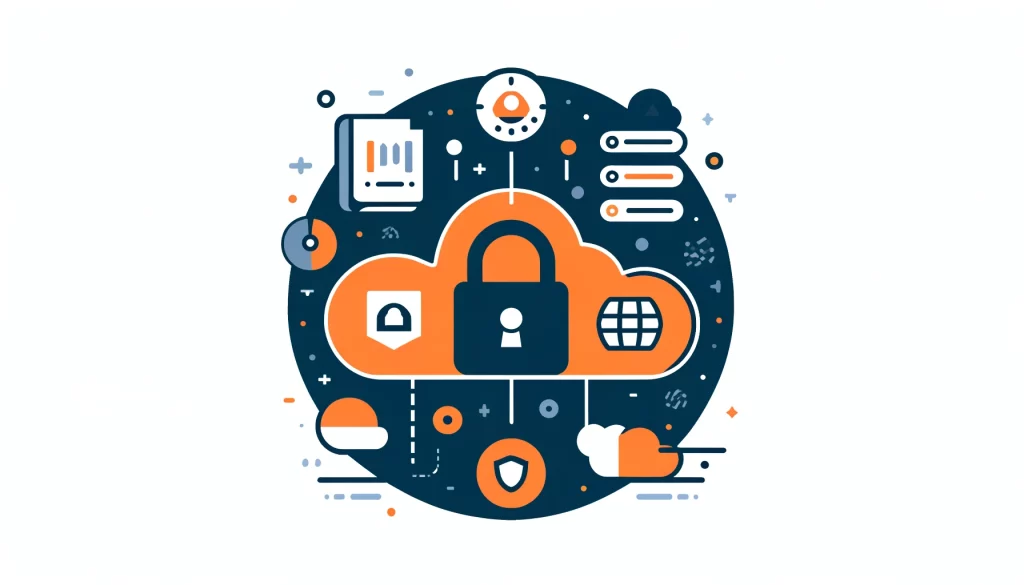
Data Lake Security

Introduction
Data lakes have become a critical component of modern data architecture. They enable organizations to store and analyze vast amounts of structured and unstructured data from diverse sources. Data lake security can be challenging because of their large scale, complexity, and the sensitive data they hold. Data lake security is crucial for protecting data assets, ensuring compliance, and maintaining the trust of customers and stakeholders.
In this article, we will learn about the basics of keeping data lakes secure. We will cover important ideas, tips for security, and examples from real life.
What is Data Lake Security?
Data lake security is about keeping the data in a data lake safe from unauthorized access, breaches, and misuse. Different measures and practices achieve this. It involves securing the infrastructure, data, and access controls throughout the data lifecycle. Data lake security aims to keep data safe and accessible for authorized users.
Data lakes often contain data from various sources, such as:
- Transactional databases
- Log files
- Social media feeds
- IoT devices
- External data providers
To keep all this diverse data secure, a comprehensive plan is necessary. This plan should consider the unique characteristics of each data source and the overall data lake setup.
Security Aspects of Data Lake Security
To effectively secure a data lake, organizations need to consider several key aspects:
- Access Control: Implementing robust access control mechanisms is crucial to ensure that only authorized users can access the data. This includes authentication, authorization, and fine-grained access controls based on user roles, data sensitivity, and business requirements.
- Data Encryption: Encrypting data at rest and in transit helps protect sensitive information from unauthorized access. Data lake platforms often provide built-in encryption capabilities, but additional measures may be necessary for highly sensitive data.
- Data Masking : Organizations use techniques like tokenization and pseudonymization to protect sensitive data. These techniques allow authorized users to access the data while keeping it secure. This is particularly important for compliance with regulations like GDPR or HIPAA.
- Auditing and Monitoring: Continuously monitoring data access and usage patterns is essential for detecting and responding to security incidents. Auditing capabilities enable organizations to track who accessed what data, when, and for what purpose.
- Data Governance: Establishing clear data governance policies and procedures ensures that organizations manage data consistently and securely throughout its lifecycle. This includes data classification, retention policies, and data sharing agreements with external parties.
Examples of Data Lake Security
To better understand data lake security in practice, let’s consider a few examples:
Example 1: Securing Sensitive Customer Data
An online store keeps customer information, like names and payment information, in a data storage system. To secure this sensitive data, the company can implement the following measures:
- Encrypt PII and payment data at rest using AES-256 encryption.
- Use data masking techniques to obfuscate sensitive data elements when accessed by non-privileged users.
- Implement role-based access controls (RBAC) to ensure that only authorized personnel can access customer data.
- Enable audit logging to track all access to sensitive data and monitor for suspicious activities.
Example 2: Securing Data in a Multi-Cloud Environment
Consider an organization that utilizes multiple cloud platforms, such as AWS and Azure, to host their data lake. Securing data across different cloud environments requires a consistent and unified approach:
- Protect your data using cloud encryption services like AWS KMS or Azure Key Vault to keep it secure.
- Implement federated identity and access management (IAM) to centralize user authentication and authorization across cloud platforms.
- Establish secure data transfer mechanisms, such as VPN or dedicated interconnects, between cloud environments.
- Implement data loss prevention (DLP) controls to detect and prevent unauthorized data exfiltration.
The Role of DataSunrise in Data Lake Security
DataSunrise is a comprehensive data security platform that offers exceptional and flexible tools for data management, including security, audit rules, masking, and compliance. With DataSunrise, organizations can enhance the security of their data lakes through features such as:
- Fine-grained access controls and dynamic data masking
- Real-time monitoring and alerting for suspicious activities
- Automated compliance reporting and auditing
- Seamless integration with popular data lake platforms
By leveraging DataSunrise’s capabilities, organizations can streamline their data lake security efforts and ensure the protection of their sensitive data assets.
Conclusion
Data lake security is a critical aspect of modern data management. As organizations use data lakes more, it’s important to have strong security measures in place. Organizations should focus on key aspects of data lake security to protect their data assets and maintain trust. These aspects include access control, encryption, data masking, auditing, and governance.
To learn more about how DataSunrise can protect your data lake, schedule an online demo with our team. Our experts will show the great tools DataSunrise offers for managing data, security, audits, masking, and compliance.
